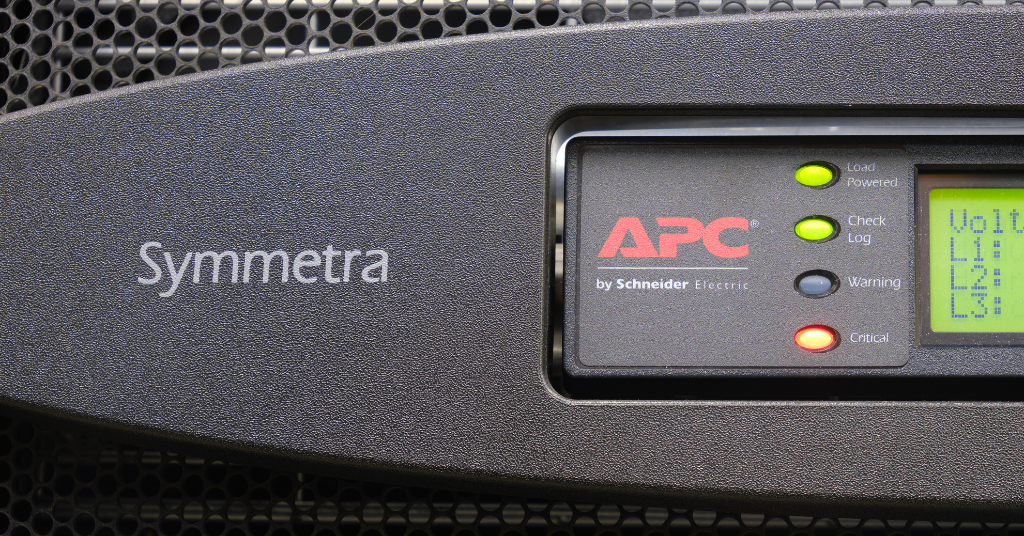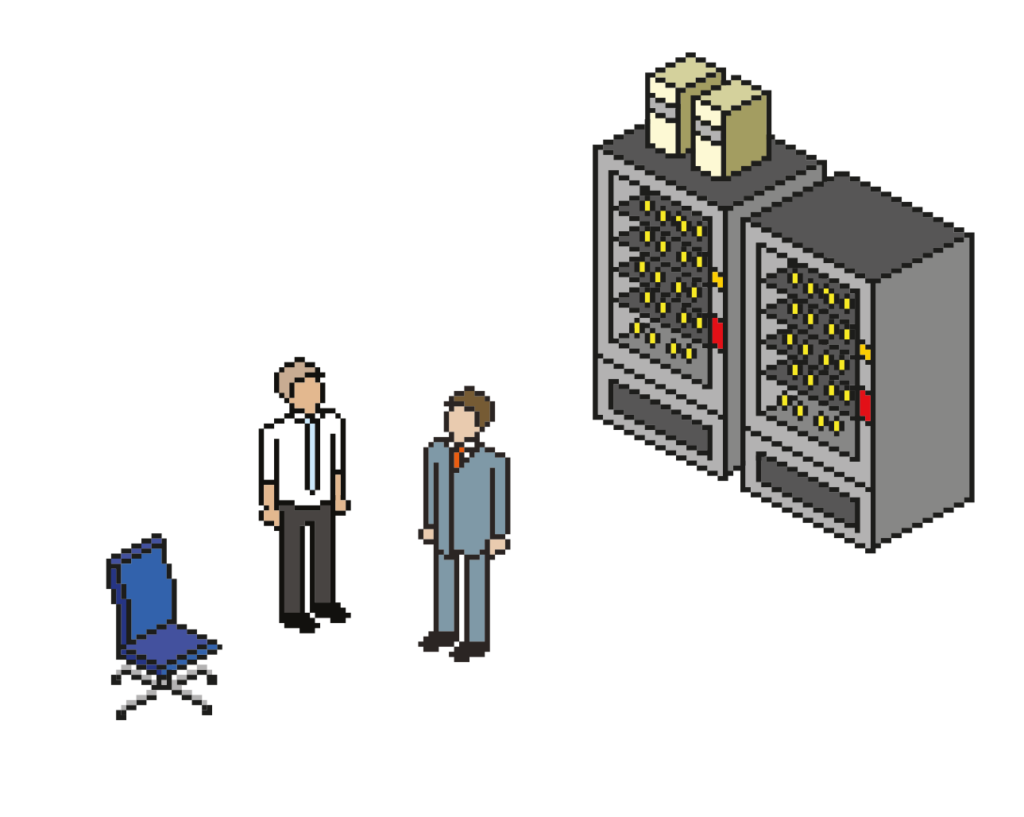

This month we have worked with 3 or more clients, either replacing UPS units completely, or swapping out the batteries.
What happened / What was the problem?
Purely coincidentally, three of our clients this month had issues with their UPS devices (Un-interruptible Power Supply). We thought it would be useful to look at what these devices are and why they are so important.
Acting as a battery backup for your electronics, a UPS keeps devices running during short outages and gives you precious time to shut things down properly during longer ones. These units are powered from the mains supply, which charges the internal battery cells. These cells in turn provide power to the devices being protected, therefore providing a steady and consistent supply. The devices come in all sorts of sizes, from small units designed to protect a single PC setup, to very large (and heavy!) units that are designed for multiple servers and comms cabinets.
Here’s why theses devices are so useful:
They Prevent Data Loss:
If you’re working on something important and the power cuts out suddenly, a UPS gives you enough time to save your work and shut down safely. No more lost documents or corrupted files.
They Protect Against Power Surges:
UPS systems often include surge protection, shielding your devices from damaging voltage spikes that can occur during storms or when power is restored.
They Keep Critical Devices Running:
For servers, medical equipment, or network infrastructure, even a few seconds of downtime can be disastrous. UPS devices can ensure uninterrupted operation until a generator kicks in or power returns.
They Extend Equipment Life:
Sudden shutdowns can put stress on hardware. A UPS helps smooth out voltage dips and fluctuations, preserving the health of your computers and sensitive electronics.
What did we do to fix?
A UPS can be thought of as two main parts within the one device, the control device and the battery cell pack. The cells store the power, and the control unit monitors the input supply, the power being drawn by connected devices, and the health of the battery cells. In most cases, after a few years, it is just the cells that wear out, and the unit will warn the battery health is not sufficient to protect the connected devices.
This month we have completed, or have scheduled in, works to replace batteries in two different client UPS units. The replacement cells are sourced to match the unit specifically. We then arrange a visit to site to swap the old cells for new. Most modern UPS units can actually have their battery pack replaced in “hot-swap” mode, meaning there is no need to power off connected devices and therefore no downtime. We do however usually perform these swaps at the beginning or end of a working day to minimise any fallout should there be complications.
Eventually, the control unit itself may fail. In these cases, the entire unit is replaced. We’ve had this issue arise with a separate client this month. The unit that failed was first installed in 2005, so it has definitely served its time! We sourced a brand-new unit and got this installed on site, connecting to mains, and the devices it protects, and fully testing. We take the time to ensure the new unit is charged before it goes live, to make sure devices are protected from the get-go.
What effect did it have for the client?
These units provide huge peace of mind for clients, knowing when the power goes out, the critical elements of the IT system are safe and sound.
A UPS doesn’t just keep devices running during a blackout, it can also correct “dirty power” also known as “brown-outs”, even when the power remains on.
That means it silently fixes things like voltage dips or surges before your devices ever notice. So your UPS is basically the quiet, unsung hero that protects your tech from the electricity board having a bad day – kind of like a power conditioner and a superhero in one!



